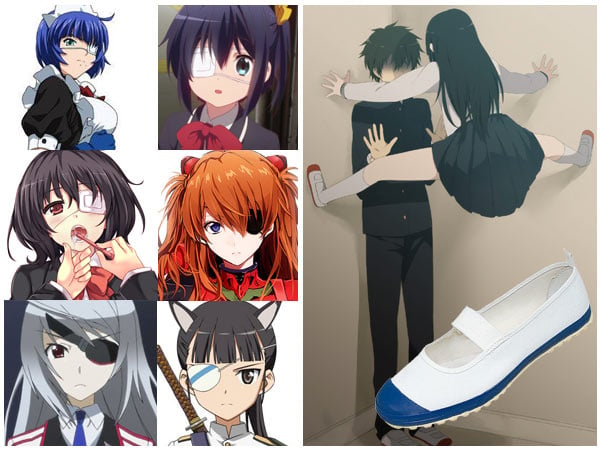
The concept of 萌え moé can be quite deep. Coined around 1993 in response to (according to one theory) the extreme cuteness of 蛍土萌 Hotaru Tomoe, aka Sailor Saturn, the term describes the trend of anime characters who are meticulously designed to represent a kind of “cuteness ideal” in the minds of (usually male) fans. In the end it’s basically a clever hack into our brains intended to illicit the same response we’d have if we saw a kitten or a baby, and it usually works like a charm. While there are many aspects to a well-designed moe character, for me it’s all about the little imperfections which make them charming. A cute moe girl might be clumsy, wear glasses, be nervous having a flat chest, be a childish tsundere, or be so bad at cooking that anything she makes is poisonous. Another pillar of moe cuteness are girls who wear an eyepatch covering one eye, which makes their characters seem weaker and more adorable. This trend got started by the original Evangelion series when fans were bowled over by the cuteness of “battle damaged Rei” with her bandages and eyepatch, and has been going strong ever since. I remember watching a late-night talk show featuring actress Chiaki Kuriyama (of Battle Royale and Kill Bill fame), a lifelong otaku. She brought out a gorgeous Ayanami Rei figure and started obsessing about how she loved the bandages and eyepatch, while everyone in the audience nodded in agreement.
One of the defining cultural differences between Japan and the West is the Japanese custom of removing shoes before entering a home or many businesses, including J-List. Every Japanese home has a recessed area called a genkan where the shoes are removed when entering. This space is actually considered part of the outside of the house (back in the day farm animals were kept in the genkan space for warmth), and it’s not uncommon for visitors to open your front door and step inside while saying “hello?” to see if anyone is home. Since we all need to wear shoes indoors sometimes, certain cultural rules have evolved, like the way people will bring indoor-only gym shoes to wear while doing sports. In Japanese schools, students put their outdoor shoes in an assigned “shoes box,” changing into special indoor shoes called 上履き uwabaki for wearing while inside the school. If you’ve ever wanted to own a pair of these indoor shoes, either for cosplay or because they’re very comfortable to walk around in, J-List now has them available!
JAST USA and J-List have been hard at work to clear our backlog of games and get them where they belong, into the hands of dedicated visual novel fans. In addition to recently shipping the Nitroplus “sword opera” Hanachirasu and the total remake of Kana Imouto and announcing the upcoming Starless, we’re now taking the wraps off the Limited Edition for Shiny Days. It’ll be great: a large Japan-style box, with the massive game (18GB on two dual layer DVDs), a 48 page artbook, original mouse pad and more. Preorder your copy now!
















